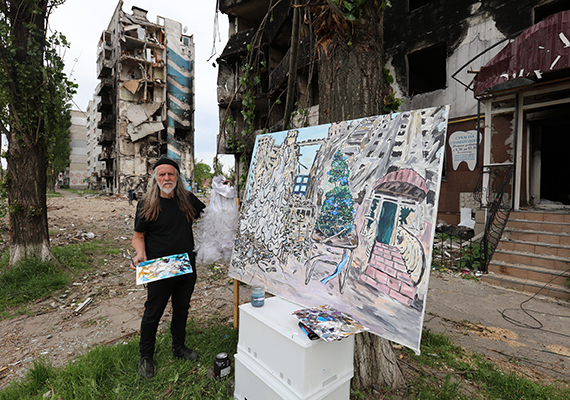Image: Leanne Willis pictured in the exhibition “50 Years of Collecting”, at Deakin University Art Gallery in front of the work by artists (left to right): Anne Scott Wilson, Augustine Dall’Ava , Reko Rennie, Kirsten Lyttle, Queenie Kemarre, Wilma Tabacco, Michael Johnson, Kate Beynon, Helen Tyalmuty McCarthy, Elvis Richardson, Sue Anderson, Janet Dawson, Ray Thomas, Jenna Lee, Eva Älmeberg and Brad Gunn. Full artwork details available at collections.deakin.edu.au/explore Photography Fiona Hamilton.
Typically, public art collections are deep but hidden – only a fraction of the works held are on display at any given time. This is not the case at Deakin University.
'We have around 56% of the collection on display, which is extremely high,' explains Senior Manager Art Collection and Galleries, Leanne Willis (Graduate Diploma of Museum Studies '92).
'The other institutions typically on average have around 5% of their collection on display, which is on a 10-year cycle. So, if a work is represented in a typical institution's collection, or is donated to their collection, it will probably only be seen once every 10 years.
'However, at Deakin, we try and display as much as we can – both on the university campus and touring as well.'
When Deakin University was formally established in 1974, it already boasted an impressive art collection, thanks to the previous institutions that formed its foundation. In the five decades since, deep connections with Australian artists and donors have grown the collection to become one of the most distinctive and accessible in the country.




